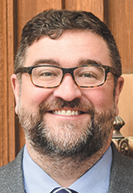Subscriber Benefit
As a subscriber you can listen to articles at work, in the car, or while you work out. Subscribe NowAfter a nearly two-year pilot program, the Marion County Early Intervention Team and the Indiana Public Defender Commission say the initiative has shown promising early results.
The program, known as EIT, began in 2021 and is funded by the Indiana Public Defender Commission, which provided a grant to the Marion County Public Defender Agency. The goal has been to reduce the number of cases approved for filing in the juvenile delinquency system and to reduce the number of youths ordered into secure detention at initial or detention hearings.
The report, released by the commission, shows that program has seen a decrease in case length.
“The difference was small but statistically credible, from 78 days in the non-EIT data to 73 days in the EIT data,” the report states. “However, this average is somewhat skewed by outliers with long case lengths, so we also compared the percentage of cases that closed under 60 days. This difference was also statistically credible, with 43% of the EIT cases closing in this period, compared to 36% of non-EIT cases.”
The report further notes that the cases may be processed faster due to additional information provided by the EIT to the court and changes in client behavior due to services provided by the EIT or other mechanisms.
Successes, setbacks

Jill Johnson of the Marion County Public Defender Agency and head of the agency’s juvenile division said the agency talked with clients and attorneys and found there was potential to do more to help youths in the legal system.
“What we recognized is we had an opportunity to work with families sooner, help provide them with greater information so that when they’re coming into the initial hearing court, they could feel not only better supported, but have a better understanding of the process, because a lot of these children and their families have never been to court before,” Johnson said. “We can help them feel supported, but we can also gather information from them and help plan so that we can present arguments to the court to try to get better outcomes at that critical initial phase.”
According to Johnson, the agency proposed funding for a designated team of an attorney, a case manager and a paralegal whose full-time job would be to prepare and support youth and families.
“I think the thing that we see the most is that we’re better able to effectively support and serve youth and their families,” Johnson said.
“It’s been a big kind of change, but in a really positive way,” she added.
But there have also been hurdles to overcome throughout the pilot. That includes hiring difficulties.
Johnson said the program has always had an attorney and a paralegal, but not consistently a case manager. It has had a case manager for almost a year now.
“When we first started, the plan was to have not only the attorney in court, but the social worker case manager that could really provide that support to the family, that could provide community-based referrals and connections and have helped them through that,” Johnson said.
She added that the agency is continuing to work on finding the best way to move children back into the community.
“Our probation department has been very receptive, and doing so in a safe way to have kids back in the community, so we’re really trying to continue with that work,” she said.
Phase two of the program, Johnson said, is figuring out how to reconnect youth who are released and not in the detention center sooner with their families.
“Where we’re really trying to work on now is also presenting plans to the court that are alternatives to formal court processing, so trying to present to the court information about a particular child, maybe the charges and the circumstances,” she explained. “Are we able to put in place some recommendations to the family for community-based supports or other things that they can explore outside of the formal court processing to then show the court, ‘Look, this family’s taking these steps to address these needs. We’re supporting them in this way. You don’t need this case to formally proceed in order to get those supports’?”
What’s next?

Derrick Mason, executive director of the Indiana Public Defender Commission, said the Indiana General Assembly provided the commission with funding for the program. But the eventual goal is for funding to come from the county.
“Our goal would be that the county is funding their full 60% and we’re just reimbursing the remainder,” Mason said.
He added that once the pilot program concludes, the commission’s goal is to take the information and tell other counties that have a significant juvenile delinquency or secured detention population about the results and offer the possibility of participating in another pilot program.
“Ultimately, it’s not so much tweaking the pilot as it is trying to launch a similar service in more places than just Marion County,” Mason said.
He said some counties have already expressed interest in the pilot program’s results, but he noted those results are preliminary.
According to the report, the interim results show strong evidence that the team has met its goal in terms of youth in secure detention.
“And as the program continues through 2024,” the report says, “yet more evidence may accrue, and more nuanced and complicated questions about the program’s benefits may be answered.”•
Please enable JavaScript to view this content.
